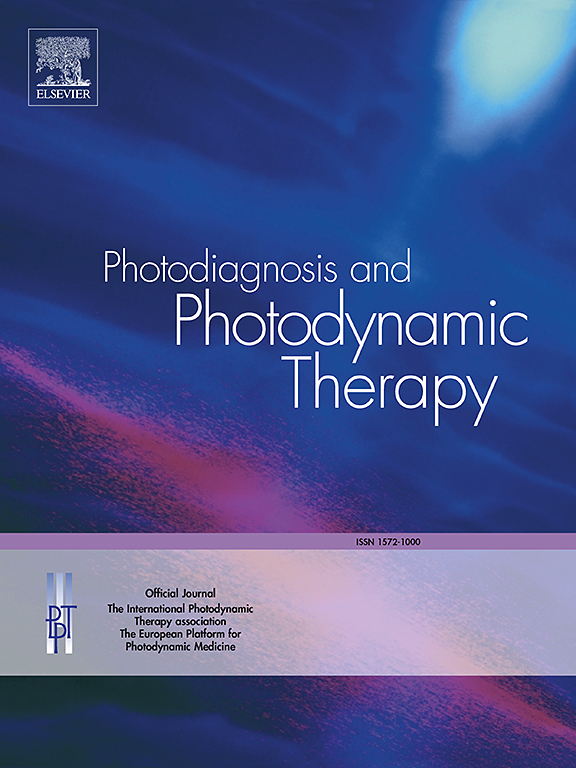Comparison of retinal vascular abnormalities in the fellow eyes of children with Coats’ disease and normal subjects using ultra-widefield fundus fluorescein angiography
IF 3.1
3区 医学
Q2 ONCOLOGY
引用次数: 0
Abstract
Purpose
To investigate retinal vascular abnormalities in the affected and fellow eyes of children with Coats’ disease using Optos® ultra-widefield fundus fluorescein angiography (UWFFA) and compare the peripheral vascular abnormalities between fellow eyes and normal control eyes.
Methods
Children diagnosed with Coats’ disease who underwent UWFFA were retrospectively reviewed. Healthy eyes with complete UWFFA data were selected as controls. Retinal vascular abnormalities of the primary affected, fellow eyes and normal control eyes were recorded by investigating the UWFFA images.
Results
Among the 190 eyes of 95 patients with unilateral Coats’ disease, 83 (87.4%) were male, and the median age was 9.00 (7.00, 12.25) years (4–18 years). 93 (97.9%) fellow eyes had peripheral capillary telangiectasia that most commonly located in the temporal periphery. 59 (62.1%) fellow eyes had microaneurysms and 19 (20.0%) had vascular leakage; 29 (30.5%) fellow eyes had peripheral vascular tortuosity and 86 (90.5%) eyes had peripheral right-angle vessels. Peripheral capillary non-perfusion (CNP) were found in 31.6% (30/95) fellow eyes. We also found that the terminal vascular patterns in the fellow eyes were mainly loop pattern, accounting for 90.5%. The incidence of capillary bed abnormalities, vascular leakage, right-angle vessels and CNP were significantly higher in fellow eyes of Coats’ disease than control eyes (p<0.001, p=0.044, p<0.001, p=0.001, respectively). Regarding the terminal vascular patterns, the proportion of loop pattern in fellow eye group was significantly higher than that in control eye group (p<0.001). A total of 21 Coats’ patients had follow-up UWFFA data. The average follow-up time was 13.19±10.09 (3–35) months. There was no significant change in peripheral retinal vascular abnormalities in the fellow eye of all patients between the first and last visit.
Conclusions
Because Optos® UWFFA device is able to quickly take panoramic fundus images using mild excitation light without contacting the cornea, it allows the detection of peripheral vascular changes in the fellow eyes of children with Coats’ disease. Contrary to the previous belief that Coats’ disease is a “unilateral condition”, our finding shows that Coats’ disease appears to be a highly asymmetric bilateral disease, and the peripheral vascular abnormalities in the fellow eye remains stable in short term.
超广角眼底荧光素血管造影对Coats病患儿与正常人同侧眼视网膜血管异常的比较
目的:应用Optos®超宽视场眼底荧光素血管造影(UWFFA)研究科茨病患儿的视网膜血管异常,并比较其周围血管异常与正常对照眼的差异。方法:回顾性分析诊断为Coats病并行UWFFA的儿童。选取UWFFA数据完整的健康眼作为对照。通过UWFFA图像记录原发受累眼、同侧眼和正常对照眼的视网膜血管异常情况。结果:95例单侧Coats病患者190只眼中,男性83只(87.4%),中位年龄为9.00(7.00,12.25)岁(4 ~ 18岁)。93只眼(97.9%)有外周毛细血管扩张,最常见于颞外周。并发微动脉瘤59例(62.1%),血管渗漏19例(20.0%);29只眼(30.5%)有周围血管扭曲,86只眼(90.5%)有周围直角血管。外周毛细血管无灌注(CNP)发生率为31.6%(30/95)。同体眼终末血管型以环状为主,占90.5%。科茨病患儿的毛细血管床异常、血管渗漏、直角血管和CNP的发生率明显高于对照眼。结论:由于Optos®UWFFA装置能够在不接触角膜的情况下使用温和的激发光快速拍摄眼底全景图像,因此可以检测科茨病患儿的周围血管变化。与之前认为Coats病是“单侧疾病”相反,我们的研究结果表明,Coats病似乎是一种高度不对称的双侧疾病,而同侧眼睛的周围血管异常在短期内保持稳定。
本文章由计算机程序翻译,如有差异,请以英文原文为准。
求助全文
约1分钟内获得全文
求助全文
来源期刊

Photodiagnosis and Photodynamic Therapy
ONCOLOGY-
CiteScore
5.80
自引率
24.20%
发文量
509
审稿时长
50 days
期刊介绍:
Photodiagnosis and Photodynamic Therapy is an international journal for the dissemination of scientific knowledge and clinical developments of Photodiagnosis and Photodynamic Therapy in all medical specialties. The journal publishes original articles, review articles, case presentations, "how-to-do-it" articles, Letters to the Editor, short communications and relevant images with short descriptions. All submitted material is subject to a strict peer-review process.
 求助内容:
求助内容: 应助结果提醒方式:
应助结果提醒方式:


